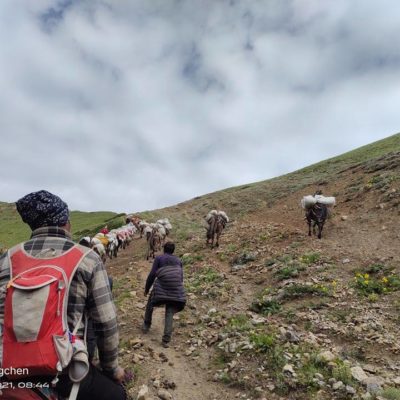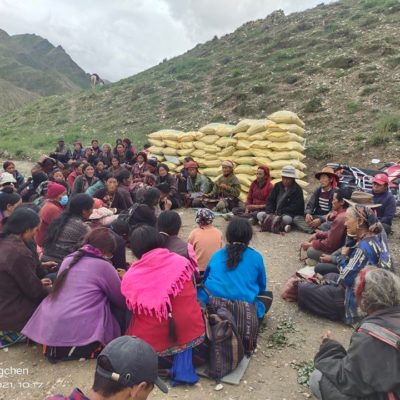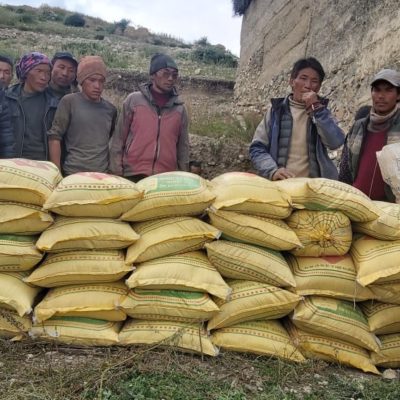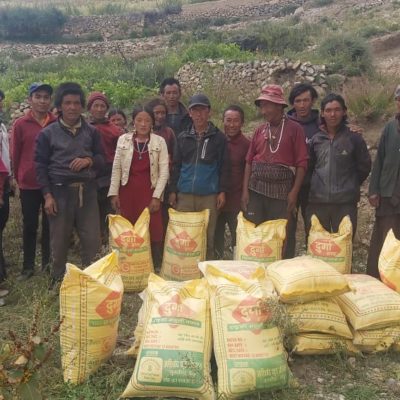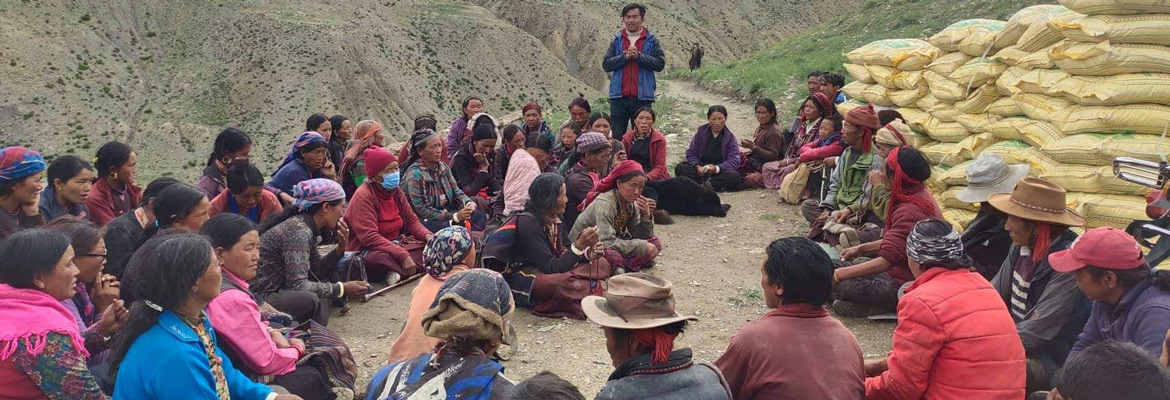
Covid Medical and Food Support Emergency Assistance
The Covid situation this summer in the Dolpo was dire. According to th British Medical Journal, “rural municipalities were witnessing highly symptomatic villages, in which “at least one person in each household is ill with flu-like symptoms,” as reported by the ward chair of Dho village in Dolpa. These remote settings lack access to PCR tests, and nationwide lockdowns hinder symptomatic people from travelling to the nearest laboratory. In response to the high testing demand from rural regions the Ministry of Health and Population (MoHP) distributed rapid antigen tests in remote and rural areas – the proportion of cases detected by these tests increased from 0.4% on 25 May 2021 to an alarming 25% on 8 June 2021.”
Clinics were out of essential medicines and supplies and the health care providers were unable to continue their service to suffering villagers. We coordinated with Dolpo nurses and Nomads Clinic to purchase Covid test kits, medicines, masks, PPE, and oxygen concentrators. Thanks to you, we were able to contribute $5000 to this project! On June 8, these materials were transported to Saldang in a fully loaded helicopter and were shared with other health posts in the region. Special thanks to nurses Tashi Bhuti and Tsering Wangmo and to coordinators in Kathmandu Gyalpo Dolpo and Lhakpa Tsering for making this project possible.
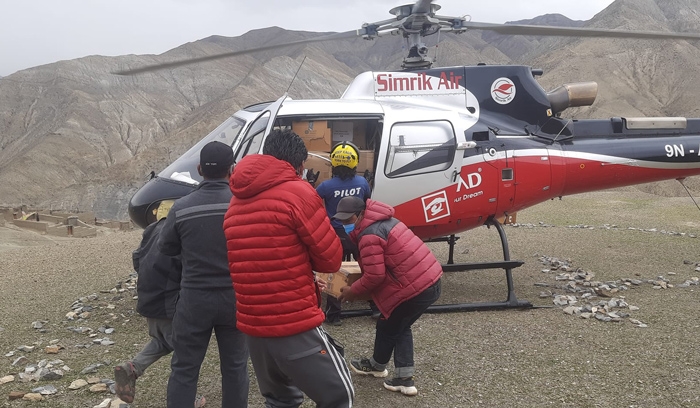
photo courtesy of Tsering Wangmo
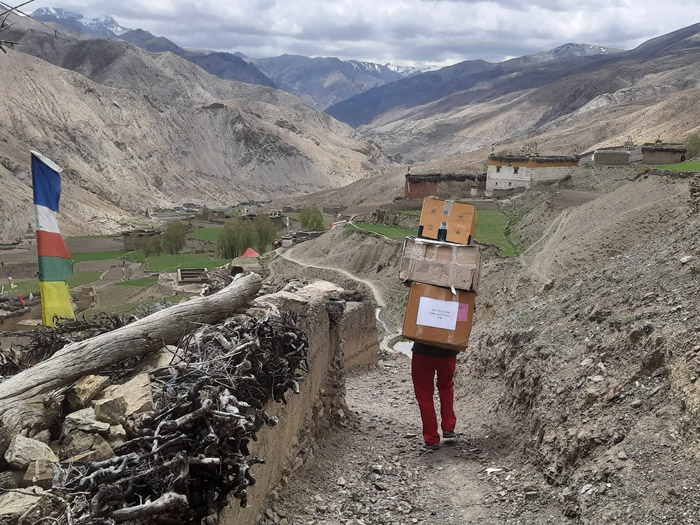
Covid supplies en route to the village health post
photo courtesy of Tsering Wangmo
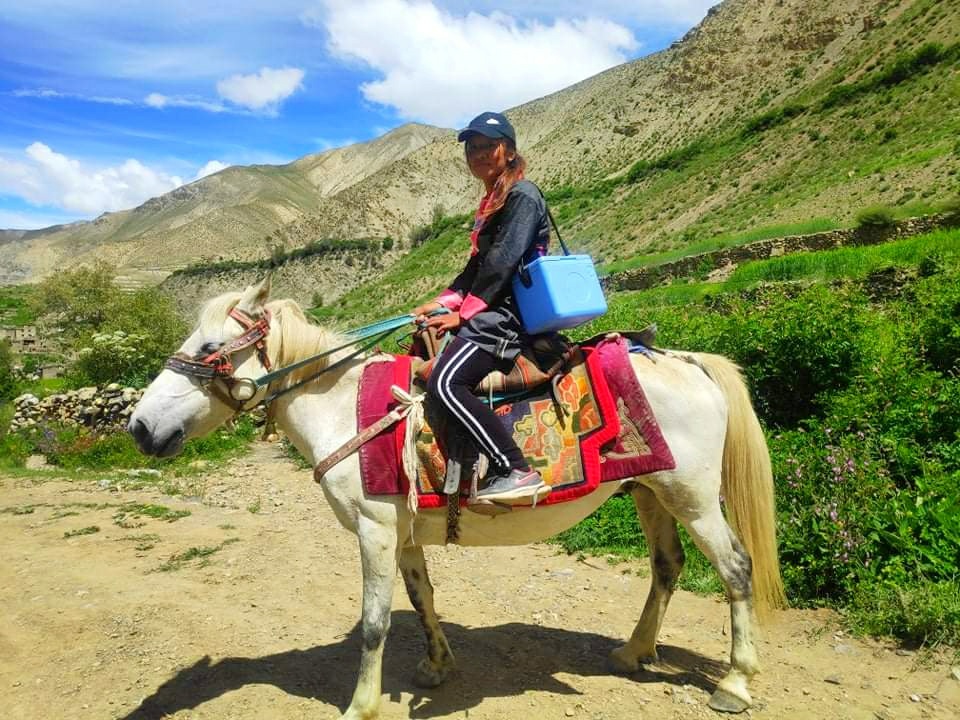
Nurses carried the vaccines in coolers to other villages. Most adults have now been vaccinated, their first dose with the Vero-Cell vaccine, their second dose with the Chinese Sinopharm vaccine.
Staff nurse, Pema Choden Gurung, delivering vaccines
photo credit – Dr. Prasanna Karki
Emergency Food Support Program Update
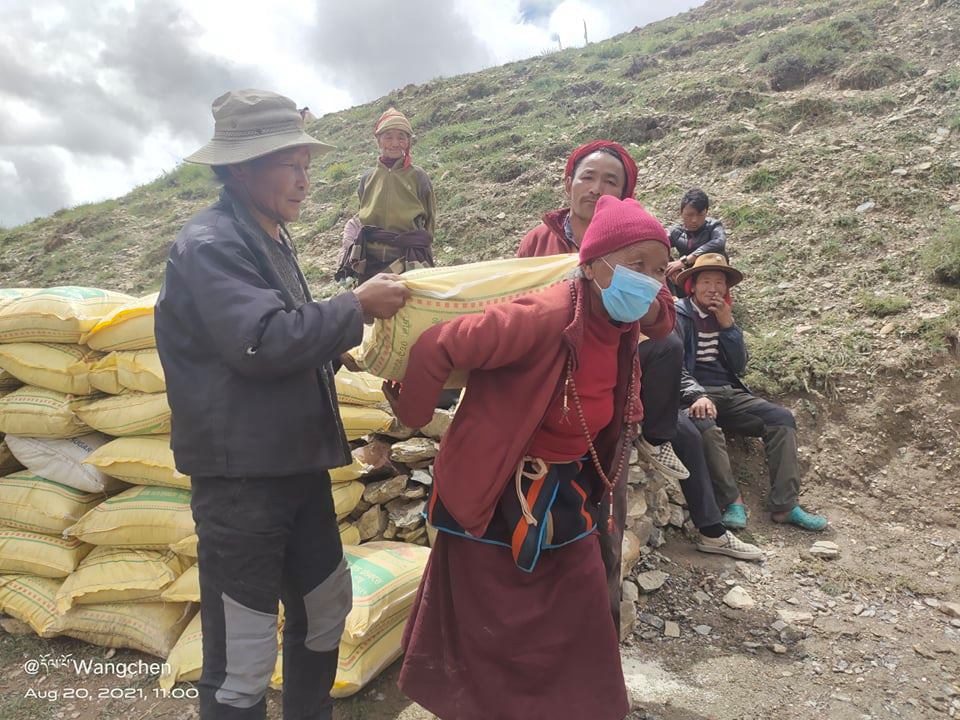
Food security has always been perilous for the people of the Dolpo but Covid made it desperate. Lockdowns eliminated their trade opportunities and income sources. Normally villagers travel to the Chinese (Tibetan) border to the north for the two week long seasonal market to purchase basics like flour, oil, salt, lentils, sugar etc. Lockdowns closed the market for the last two years.
Also, their primary source of income, the yarsagumba harvest, was cancelled last year, and was minimal this year.
photo credit – Dolpo Tulku International Group
An emergency food assistance project was initiated by the Dolpo Tulku Charitable Foundation. The total requirement was ~$60,000. We coordinated with the other NGO’s working in the area; Freunde Nepal, Human Stiftung, Shulverein Lo-Manthang and Chay-Ya Nepal, to deliver emergency food aid. Thanks to you we were able to contribute $9,000!
16,650 kg of rice for 555 families, and 6000 kg of flour for 200 families, was delivered by mules to two of the three municipalities of Upper Dolpo.
Our support went to help hungry families in the Shey Phoksundo Rural Municipality, where the schools we support are located. 373 families in critical need of food aid were identified by the ward chairman of each village.
The rice was purchased in Nepalgunj, in the lowland region of Nepal. It was transported to Dunai, the headquarters of the Dolpo region, by truck and jeep. There is a ‘road system’ in place but the bridges there cannot support a vehicle. Jeeps are positioned on each side of the bridges and the supplies are unloaded and reloaded at each crossing. It took a week for the rice to reach Dunai.
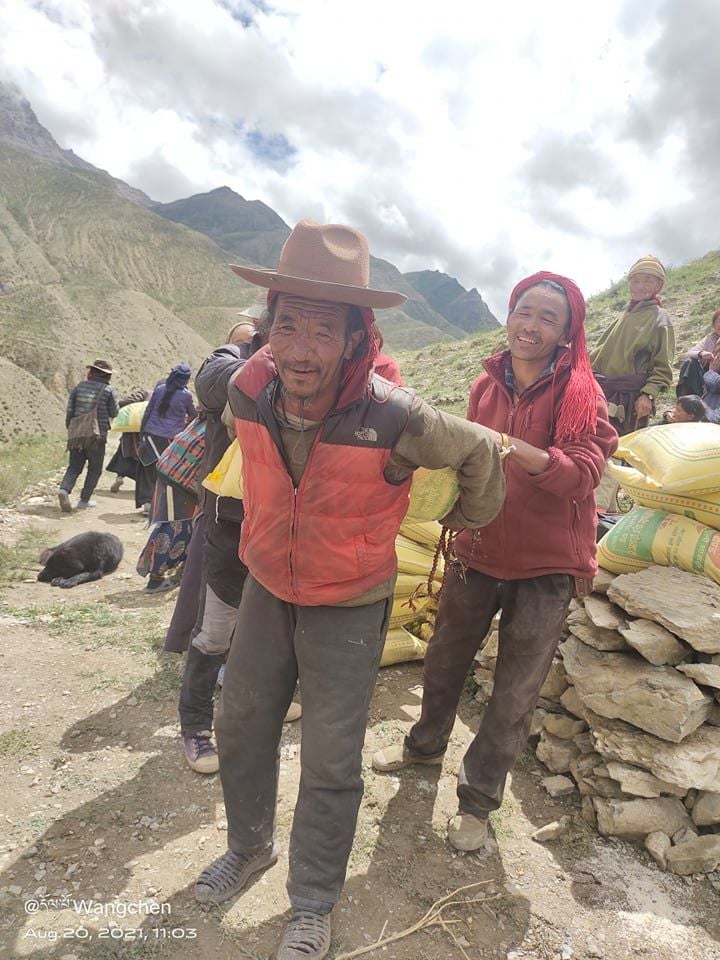
photo credit – Dolpo Tulku International Group
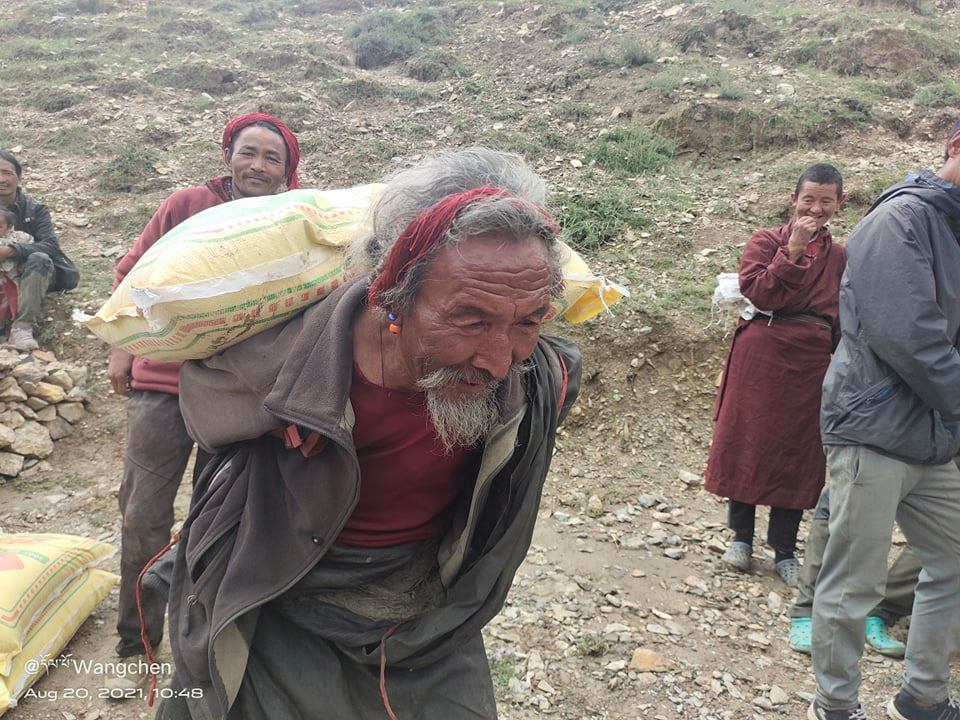
photo credit – Dolpo Tulku International Group
Mules carried the rice to the Upper Dolpo.
Rice was first transported to Saldang, and then out to other villages – Ku, Pho, Nyisal, Komang, Karang, Tiling, Namdo, Lhuri, Musi. Everyone is very grateful!
We are extremely grateful to Lhakpa Tshering, Gyalpo Dolpo, Tsering Wangmo and Tashi Bhuti whose on the ground support made these projects possible. You can read Lhakpa’s full report here.
Food Security and Climate Change
The Upper Dolpo is a high-altitude plateau. It is one of the harshest environments on the planet, but the Dolpopa have been self sufficient here for centuries. Their life is based on subsistence agriculture, animal husbandry, and on working together to survive.
Highland barley and buckwheat are the primary crops. They have short growng seasons and are especially cold tolerant. The basic food, tsampa, is made from roasted and crushed barley. Yaks, goats, and sheep provide milk, yogurt and cheese, wool and hides, and occasionally meat.
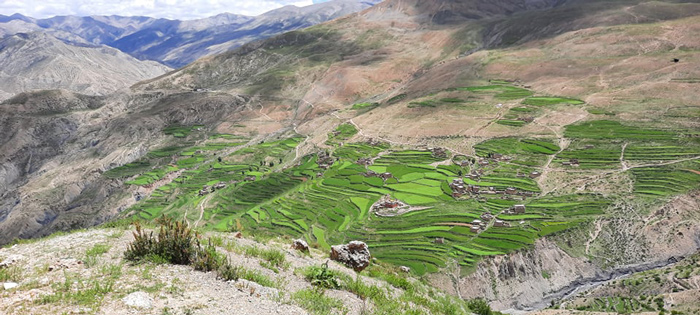
Terraced fields of buckwheat and barley
photo credit – Dolma Choekyi Gurung
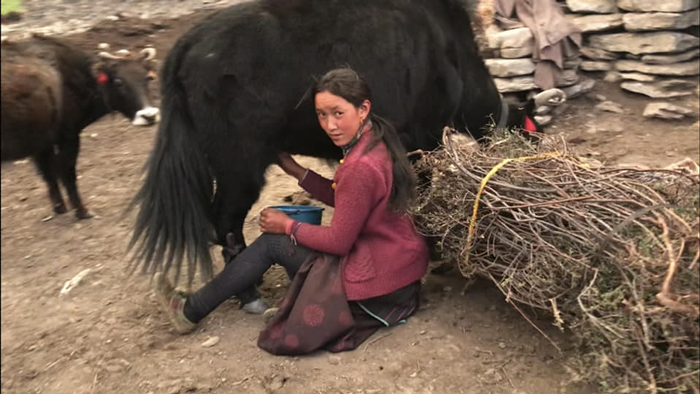
photo credit : Yubraj Rana Magar – Dolpo Youth Society
Unfortunately subsistence farming is extremely susceptible to climate change, and the climate is changing faster in the Himalayas than elsewhere. The winter of 2020 / 2021 had much less snowfall than normal. Runoff water from snowmelt is the main source of irrigation water in the Dolpo and there was significant concern there may not be sufficient water to irrigate the field crops. In some villages, rainfall occurred at strategic times during the spring and summer which allowed the crops to develop normally. In other villages the rain came late and farmers are not expecting a good harvest. Last year heavy downpours destroyed crops, and washed away centuries old terraces.
photo credit – Pema Gojor
“If you knew what I know about the power of giving, you would not let a single meal pass without sharing it in some way.”
– Buddha

